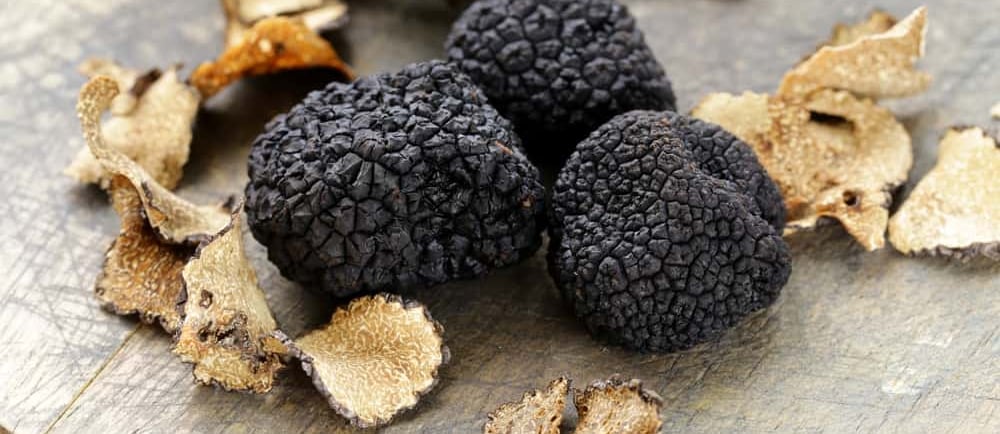
Subscribe to our newsletter
A Culinary Treasure Hunt
Truffles from France and Italy
BONUS-TRACK
4/12/20234 min read


Introduction:
The world of gastronomy has seen few delights as coveted as truffles, those elusive, luxurious fungi that grace the tables of the finest restaurants and grace the palates of the most discerning gourmands. Truffles have been integral to European culinary history for centuries, with France and Italy being at the forefront of truffle production and consumption. This article will delve into the delectable world of French and Italian truffles, their classification, tips for conservation, and the best wine pairings to elevate your truffle experience.
Classification:
Truffles are fungi that grow underground, typically found near the roots of trees like oak, hazelnut, and beech. They rely on animals, usually pigs or trained dogs, to sniff them out and disperse their spores. There are several species of truffles, but the most prized among them are the French Périgord black truffle (Tuber melanosporum) and the Italian white truffle (Tuber magnatum).
Périgord Black Truffle (Tuber melanosporum): Native to the Périgord region in southwestern France, these truffles have a distinctive, earthy, and slightly pungent aroma. After the Italian white truffle, they are considered the second most valuable truffle. Their season runs from December to March.
Italian White Truffle (Tuber magnatum): Known as the "diamond of the kitchen," the white truffle can be found across various regions in Italy, with the Piedmont region being particularly famous for its abundance. This prized fungus boasts an intoxicating musky and garlicky aroma and a truly unparalleled flavour. The white truffle season is relatively brief, typically spanning from October to December.
Summer Truffle (Tuber aestivum): Also known as "Burgundy truffle," this species is found throughout Europe, including France and Italy. They are more affordable and have a subtler flavour and aroma than their black and white counterparts. The season for summer truffles is May through August.
Winter Truffle (Tuber brumale): Found in both France and Italy, the winter truffle is similar in appearance to the Périgord black truffle but has a milder flavour and aroma. It is also less expensive than black and white truffles. The winter truffle season coincides with the Périgord black truffle season, from December to March.
Tips for Conservation:
Truffles are highly perishable, and their aroma and flavour diminish quickly after being unearthed. Here are some tips to help you preserve and make the most of your truffles:
Store truffles in a sealed container: Truffles release a lot of moisture, so keeping them in a sealed container to maintain their freshness is essential. A glass jar or airtight plastic container is ideal.
Wrap truffles in a paper towel: Before placing them in the container, wrap your truffles in a clean, dry paper towel. This helps to absorb any excess moisture and prevent the truffle from becoming too damp.
Store truffles in the refrigerator: Truffles should be stored in the refrigerator at a temperature of around 37°F (3°C). This will help to slow down the deterioration of their aroma and flavour.
Change the paper towel regularly: Replace the paper towel every day to prevent the buildup of moisture, which can lead to mould growth.
Consume truffles within a week: Truffles are best enjoyed after being harvested as soon as possible. Ideally, they should be consumed within a week of purchase.
Best Wine Pairings:
The rich and earthy flavours of truffles call for equally bold and complex wines to complement and enhance the overall dining experience. Here are some recommended wine pairings for truffles:
Barolo: Known as the "king of wines," Barolo is a robust red wine from Italy's Piedmont region. Its full-bodied structure, intense flavours, and pronounced tannins make it an excellent match for the potent flavours of white truffles, particularly when they're served with rich, meaty dishes.
Nebbiolo: Another red wine from Piedmont, Nebbiolo is the grape variety used to produce Barolo. Nebbiolo wines are generally more approachable and less tannic than Barolo, but they still have the depth and complexity to stand up to truffle-infused dishes.
Burgundy: A classic pairing for black truffles, red Burgundy wines, made from Pinot Noir grapes, offer delicate, earthy flavours that harmonise with the truffle's aroma. Look for wines from the Côte de Nuits or Côte de Beaune subregions for the best match.
Côte-Rôtie: This French red wine, made primarily from Syrah grapes, comes from the northern Rhône Valley. Its savoury, smoky, and meaty character is an excellent partner for black truffle dishes, particularly those featuring game or red meat.
Chardonnay: For dishes that incorporate truffles with lighter ingredients like pasta, risotto, or eggs, a full-bodied, oak-aged Chardonnay can be a delightful pairing. Please be sure to look for examples from Burgundy, particularly Meursault or Puligny-Montrachet, or California's Napa Valley or Sonoma Coast.
Champagne: A high-quality Champagne with a good amount of bottle age can be a surprisingly versatile pairing for truffle dishes. The effervescence and acidity of the wine help to cleanse the palate and enhance the truffle's flavours, while the toasty, brioche-like notes of aged Champagne complement the earthiness of the truffles.
In conclusion, truffles from France and Italy are among the most exquisite and sought-after culinary treasures. By understanding their classification, learning how to preserve their delicate flavours, and knowing the best wine pairings, you can elevate your truffle experience and indulge in the true luxury these remarkable fungi provide.
To unlock this gastronomic treasure and receive more insider secrets, join our Winelux - Business Insider newsletter today!
